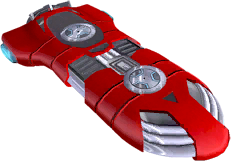

The correct, or most effective blast design will always maximise fragmentation control and will be developed based on the available data and research. Therefore, effective blast design is paramount. From the loading and unloading, to transport considerations, the initial blasting will affect each and every activity that follows it. Open mine blasting plays a pivotal role in determining the needs of all other mining activities to come. Open pit mining refers to mining minerals from, as the name suggests, an open pit or may refer to any similar shallow mining operation. Otherwise, as in open mine blasting, the rock will be excavated and hauled.īlasting Techniques and Methods Used Technique #1 – Open mine blasting Just like at a party, once the exciting part is over, somebody has to stay behind and clean up the mess! In underground mining, the tunnel will be cleared of debris, and the tunnel will be suitably reinforced. The explosives will then be remote-detonated in order to break up the rock. What kind, and the amount of explosives used will have been determined based on the research conducted just like the size and depth of the blast hole was determined based on the research.

Once the blast holes have been drilled they will be packed with explosives. In other words, on the nature of the mineral being mined, the nature of the surrounding rock/ground/soil etc. So by now all the machinery will have been procured (hired, acquired, what have you) and will be on-site, and ready to begin drilling the blast holes! The researchers’ data will reveal how deep and how wide the diameter of the blast holes should be, as this will depend on the results of the survey. This is where the actual blast hole drilling starts. Once the researchers have determined the most effective, efficient, and safest way to proceed, the project manager will take over and draw up the necessary drilling plans. Once the surveying processes have provided the surveyors with the raw data, they will turn this data over to researchers, who will then do the necessary research in order to plan effective and safe drilling patterns. Step 2 – Researching the rock types and formations The site survey will analyse the nature of the proposed mining operation, the nature of the rock, soil, ground, and/or mineral in question, and will impact the road going forward with regard to the blast hole drilling processes. These decisions will be based on the findings of the initial site survey. Where is Blast Hole Drilling Used?īlast hole drilling is traditionally used wherever the mining company wants to explore the mineral composition or potential mineral yield of the area demarcated for their mining interests.īlast holes are thus a fundamental step in the exploratory mining process, and can be employed in both surface mining operations and underground mining operations to varying degrees with varying effects or results.īlast hole drilling can also be employed in quarrying endeavors.īlasthole drilling is essentially carried out in order to break up rock and hard minerals in order to make it easier for the mining crew to get to the resources being mined.īasic Blast hole Drilling Process: Step 1 – Surveying the locationīefore the blast hole drilling can begin, the proposed site needs to be inspected, and certain decisions need to be made with regards to the hole size/diameter, the type of drill or drills that will be required, etc. Blast hole drilling is one of the primary surface drilling techniques employed in mining operations today. The initial hole into which the explosives are packed is known as the “blast hole”. The aim of this technique is to induce cracks in the inner geology of the surrounding rock, in order to facilitate further drilling and associated mining activity. The Basics About Blast Hole Drilling What is Blast Hole Drilling?īlast hole Drilling is a technique used in mining whereby a hole is drilled into the surface of the rock, packed with explosive material, and detonated.


 0 kommentar(er)
0 kommentar(er)
